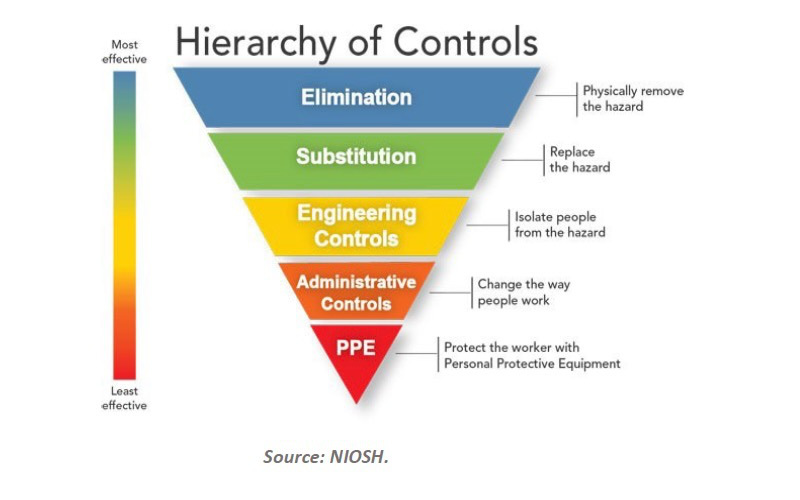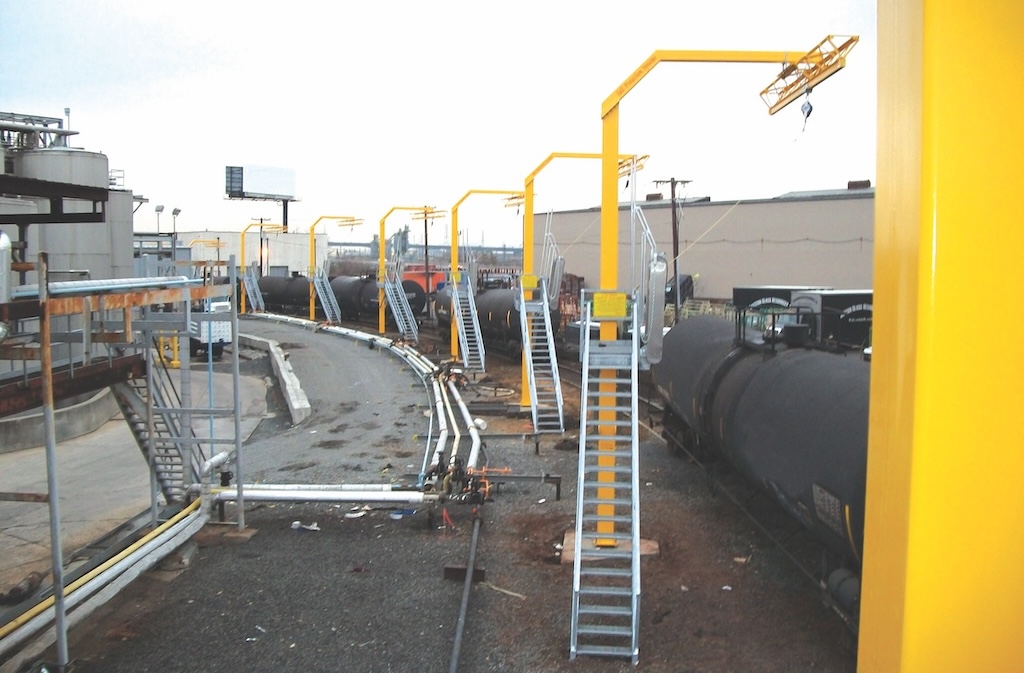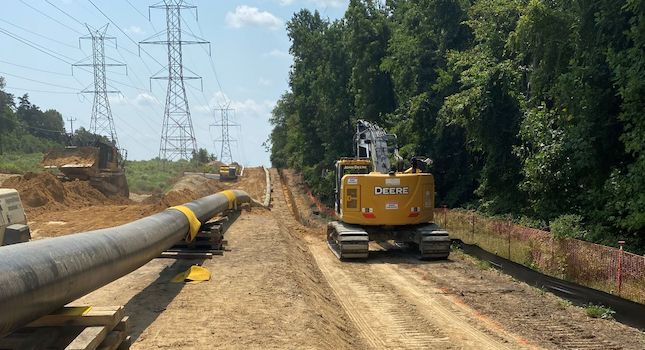Key concepts More stringent noise level rules and exposure criteria are likely. Dosimeters provide an 8-hr TWA and/or the dose.
&HEADLINE>Key concepts&/HEADLINE>
More stringent noise level rules and exposure criteria are likely.
Dosimeters provide an 8-hr TWA and/or the dose.
Integrating sound level meters are useful for detailed noise studies and “what-if” analyses.
Reducing noise in plants has been, and will continue to be, a goal of industries worldwide. Not only are workers concerned about noise, but so are the neighborhoods and communities that border industrial areas.
And, there is no indication that regulations will be relaxed. On the contrary, some organizations favor more stringent rules and noise exposure criteria. Therefore, plant personnel will be increasingly studying their noise levels.
The question is: Should they use a sound level meter or dosimeter to do the job? A good answer is: It depends!
Perspective is important
The desired end result or the person performing the test often determines the type of equipment chosen. An industrial hygienist is usually interested in the workers’ total noise exposure, either in time weighted average (TWA) or Daily Dose. These single numbers indicate whether the worker is in compliance with the applicable regulations.
The hygienist is probably more familiar with dosimeters, so this type of instrument is probably his first choice. Also, the hygienist is usually less concerned with how to reduce the noise, because in many organizations that is not his responsibility.
The plant engineering staff, however, must fix the problem and is more concerned with sound levels and how much they can be lowered. There is a good chance that a mechanical engineer dealing with noise problems has not had a basic course in acoustics. However, he would easily understand, and feel comfortable with, noise levels expressed in decibels. Therefore, he would prefer a sound level meter.
The plant manager is interested in both knowing if workers are in compliance and how the noise will be reduced.
Dosimeters
A dosimeter is essentially a special-purpose sound level meter. It is small enough to be worn by the worker and goes where he goes to measure the noise level exposure. The microphone is usually on a short cable clipped to the shirt or helmet, while the body of the unit clips to a belt or is put in a pocket.
Output of the dosimeter is usually the 8-hr TWA and/or the dose. The dose is expressed in percent, where 100% is the total permissible daily exposure and corresponds to an average level of 90 dBA for 8 hr.
Some models have “flags” incorporated into their displays that indicate if an event over 110 dBA or 140 dBA has occurred. The display usually shows the accumulated dose, TWA, or current sound pressure level.
Other dosimeters have no display or buttons at all, which prevents tampering. These instruments are usually operated in conjunction with a personal computer to set up the dosimeter and download the data.
The dosimeter is usually worn for a full shift, although it can be used for a shorter period if the noise level does not change much during the day or if the worker does not go to other locations that would have different noise levels. Some units show a projected dose or projected TWA for measurements shorter than the traditional 8-hr shift. If not shown directly on the dosimeter, the projected dose may be calculated.
The advantage of a dosimeter is that it gives information easily compared to governmental regulations to see if a worker is in compliance. Also, since the dosimeter goes with the worker, it captures all the noise to which the employee is exposed throughout the day.
The dosimeter has several disadvantages. First, it is very easy to over estimate the noise level because of the design of the small microphone clipped to the shirt, collar, or helmet of the wearer. If the microphone lies against the shirt or helmet, or is very close, reflected noise increases the level.
The theoretical noise level increase is 3 dB for a microphone placed next to a perfect reflecting plane, and 6 dB in the corner of two reflecting planes. Although the shirt, skin, or helmet is not a perfect reflecting plane, 2-3 dB increases are common.
Therefore, it is important to keep the microphone pointing away from the wearer (perpendicular to the surface to which it is mounted). This placement is not always easy to do, and the user may have to add an additional clip and make sure the microphone is checked occasionally, particularly if it gets bumped.
A second disadvantage is that the influence of various noise sources is difficult to study. There is a tendency to assume that the machine the worker operates is the main source of noise exposure, especially if it “seems noisy.” This assumption, although often correct, prevents a deeper investigation into other possible noise sources.
What about the effect of a forklift rumbling by, or the public address system, or a nearby worker operating an air grinder? All these noises are lumped together in the measurement, and there is no way to know the actual major source. If these other sources are significant (but undiagnosed), and only the suspect machine is treated, the worker’s noise exposure may not be affected as much as expected.
Sound level meters
A sound level meter indicates the current or instantaneous sound pressure level (SPL) in dB. On a basic meter, the SPL is given in dBA, that is, using an “A” frequency weighting, and a “Slow” time response. A high-end sound level meter has features such as Fast, Slow, and Impulse time weightings; A, C, and linear frequency weightings; and a peak detector.
The sound level meter is hand carried or mounted on a tripod, and gives “snap shots” of the current SPL. Because the meter simply displays the current SPL, the user can note the noise level of the machine itself, or in combination with the forklift driving by, or just the vehicle itself. Thus, the user has some control over the information being collected.
The noise levels of individual pieces of equipment or operations can be noted, and a noise map or profile developed for the plant. Noise sources can be ranked, although the duration of the noise needs to be considered when making the list.
Even though the basic sound level meter can measure individual events, some useful information needed for decision making is still lacking. What is the average level of all the intermittent sounds over a longer period, such as 30 or 60 min?
Considering the example again, let’s say the forklift pass-by is very loud, but infrequent. Does this trip add much to the workers’ noise exposure? If the forklift traffic past the machine operator was significantly increased, what is the effect on the average level? The basic sound level meter does not answer these questions.
An integrating sound level meter is useful in these situations. This meter usually provides the same features found on a high-end, nonintegrating sound level meter. But, in addition, the integrating sound level meter can average (or integrate) all the sounds over a time interval and calculate the equivalent steady SPL with the same acoustic energy.
An integrating sound level meter usually gives several types of information for the measurement period: Leq (equivalent sound level), Min (minimum sound level), Max (maximum sound level), Pk (peak sound level), elapsed time, and SEL (sound exposure level).
Leq is the steady sound level that has the same acoustic energy as the fluctuating level actually measured. (The acoustic energy is the product of the sound pressure [in Pascals, Pa] squared and time [in sec], or Pa^2 sec.)
SEL is a measure of the total acoustic energy accumulated during the measurement period. Because the integrating or averaging period can be less than 1 sec or as long as 99 hr (depending on the particular meter), the integrating sound level meter is very flexible and individual noise events can be studied in great detail. It is particularly useful for short, loud events that are otherwise difficult to characterize.
For a given measurement period, Leq, time, and SEL are directly related; given any two, the third parameter can be calculated.
SEL can be measured for specific events or under specific conditions. If the SEL is measured for a single situation, it is the measure of the acoustic energy of that event. Then, if three identical events occur in the same time period, the acoustic energy would be three times as great. Therefore, a new Leq (average SPL) could be calculated for the new SEL and the original time period. In this way, “what if” analyses can be performed and the noise problem truly understood.
-Edited by Ron Holzhauer, Managing Editor, 630-320-7139, [email protected]
&HEADLINE>Analyzing a noise problem&/HEADLINE>
A manufacturing facility realized that some of its operators’ noise exposure was at a 132% daily dose (equivalent to a 92-dB TWA). Since the machine “seemed noisy,” the manufacturer was called to lower the level, which according to the specifications was supposed to be below 85 dBA. A noise and vibration consultant hired by the machine manufacturer discovered that the noise level of the machine alone was only about 83 dBA, but considering all noise sources the Leq in the work area was 92 dBA.
While assessing the situation, the consultant noticed that the public address system was very loud. In addition, workers were wearing two-way radios that were also loud. Detailed noise measurements using an integrating sound level meter were made to determine the contribution of the PA system and radio to the workers’ overall noise exposure. Readings indicated the PA system had an equiavlent sound level (Leq) of 94 dBA over the length of a typical 6-sec announcement, with a peak level of about 110 dBA. PA use averaged 56 times/hr.
The two-way radio had a Leq of 98 dBA over the length of a typical 8-sec announcement. Radio use averaged 78 times/hr.
Since the acoustic energy was known for a single event, total acoustic energy accumulated during an 8-hr day could be calculated. The Leq over the 8-hr shift due to each source can then be calculated. This information (along with that of a nearby conveyor) is presented in the table.
Leq of the PA system, based on “spreading” the acoustic energy of the many short events over 8 hr, was 83.7 dBA, and 90.4 dBA for the two-way radio. These numbers are both considerably louder than the steady level of the “noisy” machine. If the machine had been treated and the other sources ignored, the noise problem would have persisted.
Major reductions in the noise exposure were achieved without modifying the equipment by turning down the PA system and two-way radios, relocating some of the PA speakers, and using a telephone (with a flashing light instead of a ringer) for routine communications.
Ranking the external noise sources
Average level during event, dBALength of event, secAcoustic energy of all events in 8 hr, Pa^2 isecEquivalent SPL (Leq obrt 8 hr, dBAComments
Two-way radio
98
8
12,600
90.4
The radio is the major source
PA system
94
6
2700
83.7
The PA is loude than the conveyor
Conveyor
83
Continuous
2300
83
The “noisy” machine is the quietest source
Total of all sources
17,600
92
Permissible noise exposures
Steady noise level, dBALength of noise exposure for 100% dose, hr
85
16.0
86
13.9
87
12.1
88
10.6
89
9.2
90
8.0
Note: 90 dBA is the “criterion level” (level corresponding to a 100% dose in 8 hr)
91
7.0
92
6.1
93
5.3
94
4.6
95
4.0
Note: Every 5-dB higher cuts the permissible exposure time in half (5-dB “exchange rate”)
96
3.5
97
3.0
98
2.6
99
2.3
100
2.0
Time weighted average
TWA = 85 (50% dose). This figure is the “action level” at which a hearing conservation program must be administered.
TWA = 90 (100% dose). This figure is the level at which employers shall ensure that hearing protection is worn by employees.



